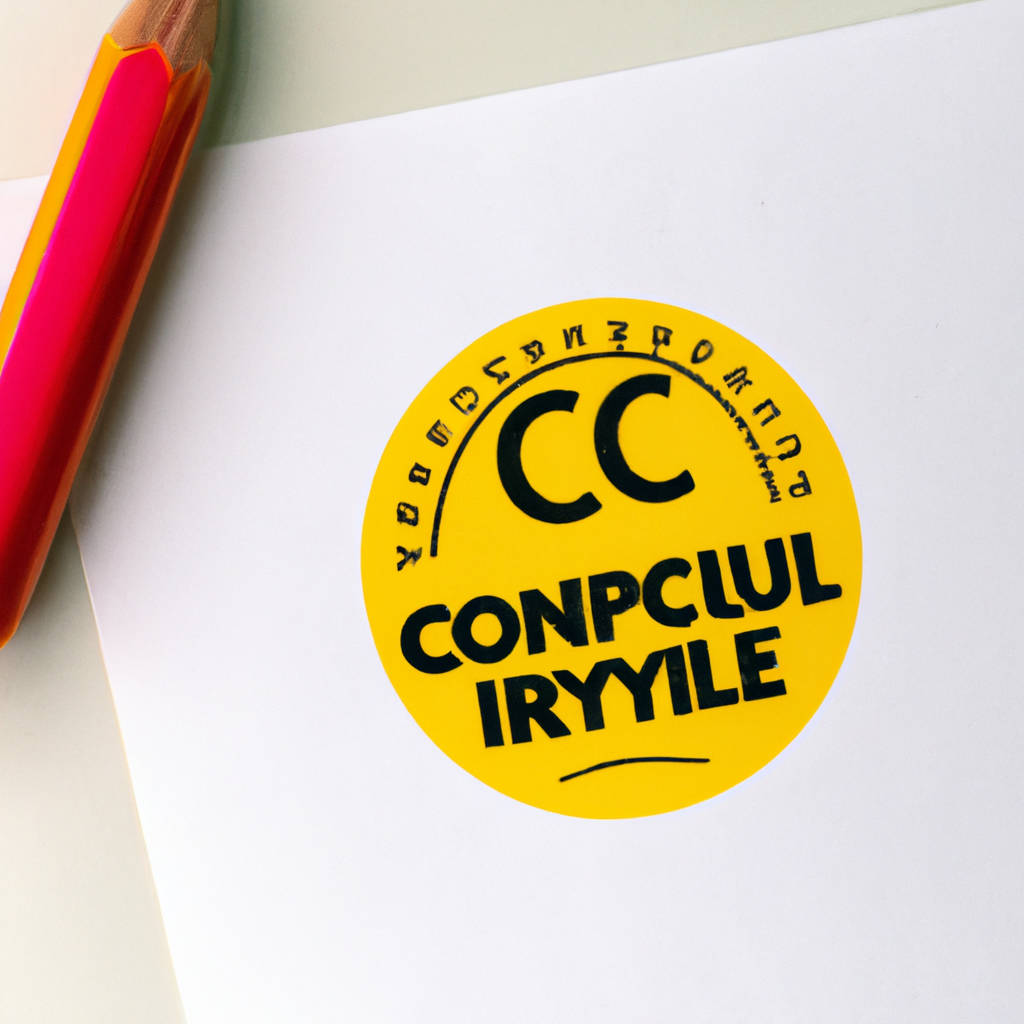Acknowledging photo credit is a fundamental aspect of ethical and respectful content creation. When we use a photograph taken by someone else, it’s essential to recognize their creative effort by giving appropriate credit. This process is not merely about adhering to certain rules or avoiding penalties but also about honoring the creativity, time, effort, and skill that went into creating the image. Recognizing photo credit significantly contributes to building a culture of respect and appreciation for visual artistry. It helps ensure that photographers receive the acknowledgment they deserve, which can encourage them to continue producing and sharing their work with the wider community. A simple photo credit can also serve as a professional courtesy and a way of establishing connections with other content creators. Furthermore, crediting photos can also provide viewers with a valuable source of information, enabling them to discover new artists or explore more works by creators they already admire. Altogether, acknowledging photo credit is a vital practice that fosters respect, appreciation, and collaboration within the creative community.

Understanding Photo Credit
Photo credit is an essential element of ethical and professional conduct within the realm of photography and digital media. It refers to the attribution given to the photographer or the owner of an image. By providing a photo credit, one acknowledges the effort, time, creativity, and skill invested by the individual who captured the image. Photo credits can be found in various forms such as a caption beneath the image, a watermark within the image, or a notation at the end of an article or blog post.
Understanding photo credit is crucial for anyone who uses or shares images, whether for personal or professional purposes. This not only respects the original creator’s rights but also maintains the credibility of the person using the image. Misrepresentation or misuse of someone else’s work can lead to negative outcomes, from damaging professional relationships to facing serious repercussions.
Furthermore, giving proper photo credit can also provide a platform for lesser-known photographers to gain recognition for their work. It can be an avenue for exposure and potential opportunities for the creator. For instance, a captivating image credited correctly could lead to an increase in followers on social media platforms or job offers from interested parties.
Conversely, it’s equally important for photographers to understand how to appropriately claim photo credit. They should be aware of the guidelines and norms for different platforms or publications. For example, in some cases, it might be acceptable to add a watermark directly onto the image, while in others a simple mention in the caption might suffice.
In conclusion, understanding photo credit is a vital aspect of respecting intellectual property and promoting fair practices in the digital world. It’s a way of showing respect for the creative efforts of others, while also ensuring one’s own credibility and integrity in handling and sharing images. Everyone, from casual social media users to professional photographers and publishers, can benefit from a proper understanding of photo credit.
Avoiding Copyright Issues
Navigating the complex world of copyright can be challenging, but it’s essential to avoid infringement issues. Copyright is a form of intellectual property protection granted to creators of original works, ensuring their rights are respected and their work is not misused. When using content created by others, it’s crucial to obtain their explicit consent or to use content that’s publicly available under Creative Commons or other open licenses. This involves understanding the terms of these licenses and adhering to them strictly. Works in the public domain are also safe to use. However, just because a piece of work is accessible freely on the internet, it does not mean it’s free from copyright restrictions. Always err on the side of caution, and if in doubt, seek permission. Acknowledging the source is another vital aspect of avoiding copyright issues. If permission is granted, the original creator’s work should always be credited in a manner they specify. Plagiarism and copyright infringement are serious offences that can lead to severe consequences, including reputational damage and hefty financial penalties. Therefore, it is in everyone’s interest, whether you are a business, an academic, or a casual internet user, to respect the principles of copyright and use other people’s work responsibly. Education and awareness about copyright issues are our best tools in maintaining a fair and respectful environment for creativity and innovation.

Upholding Etiquette
Upholding etiquette is an integral aspect of societal interaction that fosters respect, consideration, and kindness among individuals. It’s a universal language that transcends cultural, social, and linguistic barriers, enhancing mutual understanding between individuals. Observing proper manners is not merely about following a set of rigid rules, but rather an expression of empathy and consideration towards others. The essence of etiquette lies in acknowledging the personal space and feelings of others, ensuring that our actions and words do not infringe upon their comfort or dignity. Whether it’s in a professional setting or during casual interactions, maintaining etiquette promotes a positive atmosphere, instilling a sense of trust and respect. It’s also vital in the digital world, where the absence of face-to-face communication often results in misunderstandings and conflicts. Digital etiquette, or netiquette, encourages respectful and responsible behavior in online spaces. It involves respecting others’ privacy, being mindful of the language used, and refraining from cyberbullying. Upholding etiquette, whether it’s in person or online, requires a conscious effort. It’s not about being overly formal or pretentious, but about being considerate and respectful. It’s a powerful tool that can open doors, foster relationships, and create a harmonious environment, making the world a more pleasant place to live in.
Appreciating Creators
Creators are the living embodiment of innovation and imagination. They craft unique content, weaving together elements of their personality, their experiences, and their vision into something tangible that can be shared with the world. They are artists, writers, filmmakers, musicians, designers, and inventors who pour their hearts and souls into their work, often without the guarantee of recognition or even compensation.
To appreciate creators, we must recognize the time, effort, and courage that goes into their work. It is not simply a matter of enjoying the final product, but also understanding the process and the passion that led to its creation. They often face criticism, rejection, and sometimes even ridicule, yet they persist, driven by their love for their craft and their desire to share their vision with others.
In a world that often values speed and convenience over quality and originality, creators remind us of the beauty of individuality and the power of creativity. They challenge us to see the world from different perspectives, to question our assumptions, and to embrace new ideas. They inspire us, entertain us, and sometimes even change the way we think about the world.
Therefore, it is essential that we show our appreciation for creators, not just by consuming their work, but by supporting them in their creative endeavors. This can be through financial support, by sharing their work with others, or simply by expressing our admiration for their talent and their courage. Because without creators, our world would be a much less interesting, much less inspiring place.
Supporting Artists
Supporting artists is an essential endeavor that not only benefits the artists themselves but also contributes to the overall enrichment of society. Artists, regardless of their medium, whether it be painting, music, writing, or any other form of artistic expression, often rely on the support of patrons and enthusiasts to continue creating their work. This support can come in many forms, such as purchasing their work, attending their shows or exhibitions, or even sharing their work on social media platforms. Additionally, financial contributions through crowd-funding platforms or direct donations can provide the resources needed for artists to dedicate themselves fully to their craft. By backing artists, we foster a vibrant and diverse cultural landscape that inspires, challenges, and brings people together. It’s also worthwhile to note that supporting local artists can stimulate the local economy, creating a ripple effect that benefits the entire community. Therefore, while the act of supporting artists might seem like a simple one, its impact can be far-reaching and profound. It’s about more than just financial aid; it’s about recognizing the value of art and its ability to shape, reflect, and enhance our world. One can argue that the world would be a less colorful, less imaginative, and less inspiring place without the contributions of artists. Thus, we should not underestimate the importance of supporting artists in their endeavors, as their work holds a mirror to society while pushing the boundaries of creativity and expression.
Fostering Respect
Fostering respect is a vital element in establishing harmonious relationships within communities, workplaces, and among nations. It is the cornerstone of understanding that values diversity, bridges cultural gaps, and reduces prejudice. Encouraging respect means promoting a culture where one’s individuality, beliefs, and values are acknowledged and accepted, regardless of differences. It is a powerful tool in promoting equality, peace, and mutual understanding. Fostering respect is not merely about tolerating differences but about appreciating and celebrating them. It involves open-mindedness and empathy, understanding that each person has their unique perspectives shaped by their experiences. This understanding can help dissipate fear and mistrust, thereby promoting unity and cooperation. Furthermore, fostering respect also means establishing a sense of self-respect. When individuals value themselves, they are more likely to extend the same courtesy to others. This concept of respect extends beyond personal relationships to include care for the environment and respect for other species. In a broader sense, fostering respect contributes to the overall well-being of society. It nurtures a compassionate community where understanding and acceptance are the norm rather than the exception. In conclusion, fostering respect is a crucial aspect of coexistence. It is about recognizing and affirming that every individual, every culture, and every form of life has intrinsic value.

Examples of Photo Credit
Photo credit typically refers to the acknowledgment given to the photographer or owner of an image being used. It can be seen in various forms across multiple platforms, from magazines to websites, social media, and even in art galleries. There are several examples to illustrate how it is used. In the world of print media, a photograph in a newspaper or magazine will often have a line of text underneath or beside it, denoting the name of the photographer. In digital media, photo credits may appear as a watermark on the image, a caption below the image, or a link leading to the source of the image. On social media platforms like Instagram, crediting can be done in the caption or comments, tagging the photographer’s account, or using a mention feature. In an art gallery or exhibition, the photo credit might be displayed next to the photograph or in the exhibition catalogue. It’s also worth noting that some stock photo websites require users to credit the photographer or the website when they use an image. In all instances, providing a photo credit acknowledges the efforts and skills of the photographer, respects their rights, and maintains the integrity of their work. It is a standard practice in the creative industry and is highly encouraged as a professional courtesy.
Cupamag’s Facebook
Cupamag’s Facebook is a digital platform that offers a range of services and information to its users. This social media avenue provides a space for the exchange of ideas, knowledge, and experiences related to Cupamag’s services and products. It is a hub of interaction where users can engage in discussions, share their views, and ask questions. Not only does it allow users to stay updated about the latest offerings from Cupamag, but it also provides them with the opportunity to connect with the brand on a more personal level, strengthening customer-brand relationships. Through this Facebook platform, Cupamag also shares updates about upcoming events, promotions, and new releases, keeping its audience informed and engaged. Users can provide feedback, share their experiences, and even suggest improvements, making the platform a two-way communication channel between Cupamag and its customers. The page is designed to be user-friendly, ensuring that people of all ages and backgrounds can easily navigate through it. In an era where digital presence is crucial for brands, Cupamag’s Facebook plays a significant role in maintaining and enhancing its image. It is not just a source of information, but also a tool for fostering community, promoting transparency, and building trust. With its dynamic and interactive nature, it allows Cupamag to reach out to a global audience and keep them engaged, thereby contributing to its growth and success.
Erv’s Instagram
Erv’s Instagram is a social media account that showcases the everyday life and interests of its owner, Erv. Known for his unique and engaging content, his Instagram page is a haven for those who share his interests. His posts range from personal life updates to his hobbies and passions like fashion, travel, and art. Each photo is carefully curated, often showing Erv’s excellent eye for aesthetics. His captions, sometimes witty or introspective, often provoke thought and invite his followers to engage in conversation. His stories are equally captivating, offering glimpses into his daily routines or adventures. Furthermore, Erv uses his Instagram platform to advocate for causes close to his heart, raising awareness for issues that often go unnoticed. He also uses it as a means of connecting with his followers, taking time to respond to their comments and messages. Despite the digital barrier, Erv manages to create a sense of community among his followers, making his Instagram a space for connection and conversation. Also noteworthy is his use of Instagram’s various features such as Reels, IGTV, and Shopping. Whether he’s showcasing a new outfit, sharing clips from his latest trip, or promoting his favorite products, Erv’s Instagram offers a diverse range of content that keeps his followers coming back for more. The authenticity and creativity that Erv brings to his Instagram make it a standout among many, setting a high standard for social media engagement.
Isa Catepillan’s Site
Isa Catepillan’s site is a haven for those who appreciate the art of handcrafted crochet and knitting. The website showcases the stunning work of Isa Catepillan, a self-taught crochet artist of Indigenous Mapuche descent from Chile. Her intricate creations are a testament to her rich cultural heritage and her exceptional skills in crocheting and knitting. The site is not merely a platform to exhibit her beautiful designs, but also a tool to share her knowledge and passion with others. It offers tutorials and patterns for those interested in creating their unique pieces. The content is detailed and easy to follow, making it an excellent resource for both beginners and experienced crafters. The site also has an online boutique where visitors can purchase Isa’s handmade designs, which range from elegant wedding dresses to cozy home décor items. The designs are truly unique and reflect a blend of traditional Mapuche artistic elements and modern fashion trends. Isa Catepillan’s site is more than just an online store; it’s an invitation to connect with a centuries-old tradition, appreciate the beauty of handmade artistry, and create your own masterpiece. The site is a testament to Isa’s dedication to her craft and her desire to share the joy of crochet and knitting with the world.

Crediting Photos Properly
Crediting photos correctly is an essential aspect of respecting intellectual property rights. When you use a photograph that someone else has taken, it’s important to pay homage to them by acknowledging their work. Not only does this recognition uphold the value of their creativity and effort, but it also helps to maintain the integrity and credibility of your own work. Furthermore, it prevents potential disputes or misunderstandings that could arise from unauthorized usage of someone’s work. The process of crediting photographs varies depending on the platform you’re using, but it typically involves identifying the author’s name, the title of the image if it has one, and the source from which it was obtained. It’s always a best practice to seek permission from the photographer beforehand, especially if you intend to use the image for commercial purposes. If the image is licensed under Creative Commons, it’s recommended to follow their guidelines to ensure proper attribution. In the digital age, where sharing and re-sharing content is ubiquitous, it’s crucial to respect the original creators and their rights by giving proper credit for their work.
Facebook Photo Credit Guide
Facebook provides a platform for sharing a multitude of photographs, but it’s crucial to adhere to ethical guidelines when posting. As a part of Facebook’s photo credit guide, it’s recommended to always cite the source of a photo if it doesn’t belong to you. This involves providing the name of the photographer or the owner of the image in the caption, comments, or photo description. Additionally, asking for permission before using someone else’s photos is a respectful practice. If a photo is copyrighted, it’s better to avoid using it without explicit permission from the owner. Facebook itself monitors the content shared on its platform and has the right to remove any photos that infrally copyright policies. Consequently, users who repeatedly violate these guidelines may face consequences such as account suspension. These practices not only apply to personal accounts but also to business pages and groups. Therefore, it’s important for all Facebook users to understand and respect these guidelines to maintain the integrity of shared content on the platform. As a general rule, if you’re unsure whether a photo can be shared, it’s best to err on the side of caution and not post it. By following these guidelines, Facebook users can ensure they are respecting others’ work and contributing to a positive and fair sharing environment.

Instagram Photo Credit Guide
Instagram photo credit guide is essential for everyone using this social media platform, especially for those who share other people’s content. Giving credit is not just about acknowledging the original creator of the content, but it also fosters an environment of respect and integrity. In the world of Instagram, crediting isn’t merely a polite gesture but a necessity to maintain the authenticity and originality of content.
When reposting someone else’s image, the best practice is to ask for permission from the content creator first, either by direct message or email. Once granted, you should explicitly acknowledge them by tagging their profile in the image and mention them in the caption. It’s also important to remember that merely tagging isn’t enough; a clear mention in the caption is crucial to give full credit.
Instagram also offers a ‘Repost’ option to share content while automatically crediting the original creator. However, not all users are comfortable with direct reposts, so it’s still essential to ask for permission.
Remember, each content creator puts time, effort, and creativity into their work. So, when you appreciate their work enough to share it on your profile, it’s only fair to give them the recognition they deserve. Following these steps not only ensures you uphold the decorum of the Instagram community but also helps in cultivating a culture of respect and appreciation for creativity and originality.
Website Photo Credit Protocol
Website photo credit protocol is an essential aspect of online etiquette that seeks to respect the intellectual property rights of photographers and artists. It involves acknowledging the original creator of an image, thereby giving due credit for their work. This acknowledgment is usually done by including the artist’s name, the photo’s source, or linking back to the original image. The protocol serves to promote fair use, which is the limited use of copyrighted material without acquiring permission from the rights holders, for certain purposes such as criticism, news reporting, teaching, and research. However, it is important to note that fair use is not a blanket permission to use any image without giving proper credit or obtaining permission when required. Some images, such as those marked under Creative Commons license, may be freely used with proper attribution, while others require explicit permission from the owner. It is, therefore, crucial to understand the licensing terms of each image before use. In cases where the copyright holder cannot be identified, it is recommended to use images from reputable stock photo sites that provide legally safe options. Observing website photo credit protocol not only fosters respect for intellectual property but also enhances the credibility of your website. It shows your audience that you value originality and respect the effort and creativity of others. Hence, adherence to this protocol is a necessity for anyone involved in creating or managing web content.
